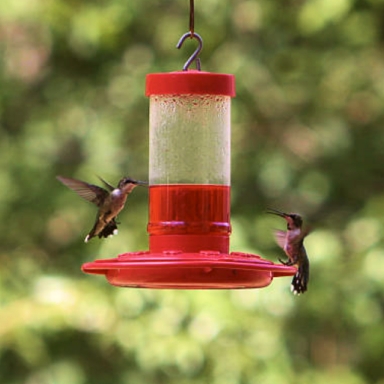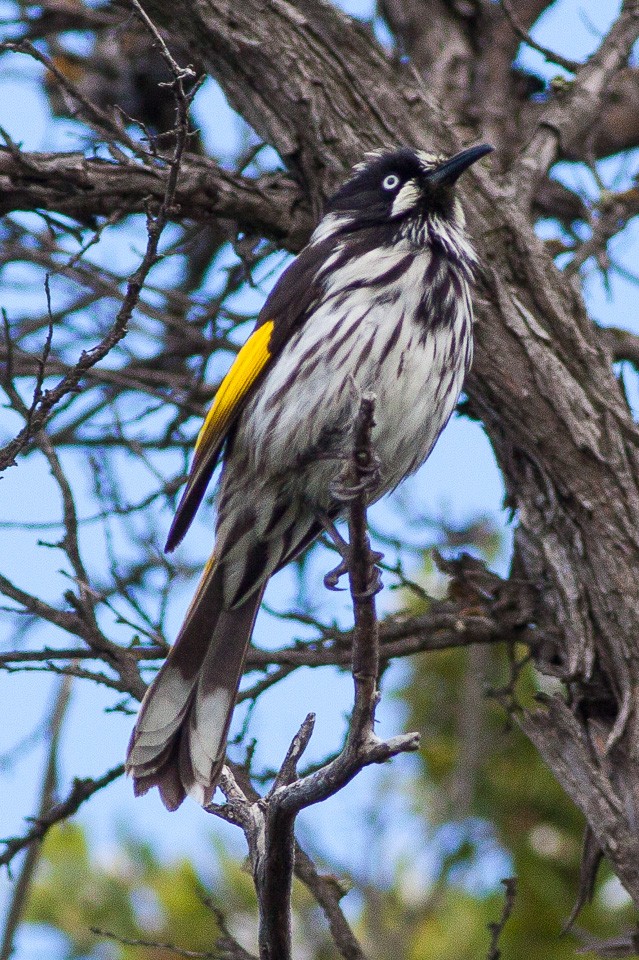New Holland Honeyeater
A species of Yellow-winged Honeyeaters Scientific name : Phylidonyris novaehollandiae Genus : Yellow-winged Honeyeaters
New Holland Honeyeater, A species of Yellow-winged Honeyeaters
Botanical name: Phylidonyris novaehollandiae
Genus: Yellow-winged Honeyeaters
Content
Description People often ask General Info
Description
The bird is around 18 cm (7.1 in) long and is mainly black, with a white iris, white facial tufts and yellow margins on its wing and tail feathers. It is a very active bird and rarely sits long enough to give an extended view. When danger approaches a New Holland honeyeater, such as a bird of prey, a group of honeyeaters will form together and give a warning call. Sexes are similar in looks with the exception that females are, on average, slightly smaller. Young New Holland honeyeaters (<1 year old) have similar colouring but have grey eyes and a yellow gape and 'whiskers' near the nares. They appear to be a socially monogamous bird with no sign of co-operative breeding, but this observation is yet to be examined. 
Size
18 cm
Colors
Brown
Black
Yellow
Gray
White
Life Expectancy
22.9 years
Nest Placement
Shrub
Feeding Habits
New Holland Honeyeater mainly consume nectar from Australian flora like Banksia and Acacia, acting as crucial pollinators. They supplement this with protein-rich invertebrates, including spiders and insects. New Holland Honeyeater may forage solo or in groups and are known to also eat honeydew from Psyllidae.
Habitat
New Holland Honeyeater predominantly inhabits heathlands, dense shrublands, and eucalypt woodlands, thriving amongst a diverse array of indigenous flora like Banksia, Leptospermum, Melaleuca, and myrtaceous shrubs. This species is also found in areas with dense heath or shrub understoreys, such as mallee heathland, eucalypt forest edges, and buttongrass sedgelands. Adaptability leads new Holland Honeyeater to occasionally occupy wet sclerophyll forests, pine plantations, and even urban parks and gardens, demonstrating a preference for habitats that offer rich nectar sources and dense foliage for shelter.
Dite type
Nectivorous
People often ask
General Info
Feeding Habits
Bird food type
Bird Feeder Type

Nectar Feeder
Species Status
Not globally threatened.
